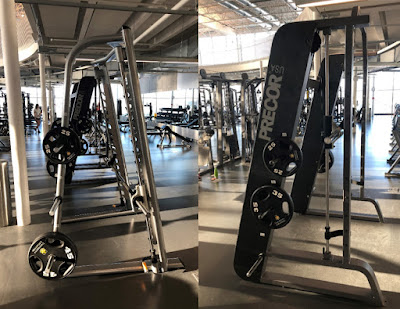Exercising to Failure
Many exercisers and exercise professionals emphasize training until failure. Exercising to failure refers to pushing your muscles to the point where they cannot perform any more repetitions of an exercise with proper form. The reason people like to train to failure is because it ensures total fatigue that helps maximize results. This type of training can offer a range of benefits for individuals looking to build strength and endurance. Some potential benefits of exercising to failure include:
- Increased muscle hypertrophy: Exercising to failure can help to stimulate muscle growth by recruiting more muscle fibers than traditional training methods. Different motor units have various thresholds for activation. As motor units fatigue and fail, these higher threshold motor unity are recruited. When you reach failure it means that all motor units have been exhausted. This can result in increased muscle hypertrophy and overall strength.
- Improved endurance: Pushing your muscles to failure can also help to improve endurance by increasing the number of muscle fibers that are able to perform work before reaching fatigue. Similarly to the first point, you recruit more muscle fibers to do more work throughout the exercise which improves the muscle’s ability to work longer.
- Greater calorie burn: Exercising to failure can also help to increase the number of calories burned during a workout, which can be beneficial for individuals looking to lose weight or maintain a healthy body composition.
- Enhanced mental toughness: Training to failure can also help to improve your mental toughness and ability to push through physical challenges. Many people get comfortable with the loads they lift and never really find out what their limits are. Training until failure is a great way to make you find your limits and push yourself through discomfort
It's important to note, however, that exercising to failure should be done in a safe and controlled manner, and may not be appropriate for everyone. While exercising to failure can offer several benefits, it may not be appropriate for everyone. Individuals who have certain health conditions or are at a higher risk of injury should be cautious when pushing themselves to their limits during exercise. If you do train until failure using barbells it is ideal to have a spotter. When using dumbbells, you should have a spotter or be comfortable with techniques to lower the weight without risking injury. Here are some examples of people who may not be suitable for exercising to failure:
- Beginners: Individuals who are new to exercise or strength training should start with lighter weights and gradually work their way up to avoid the risk of injury. It's important to build a solid foundation of proper technique, strength and endurance before attempting to train to failure.
- People with certain health conditions: Individuals with certain health conditions such as high blood pressure, heart disease, or joint problems may be at higher risk of injury when exercising to failure. It's important to consult with a qualified exercise professional before starting any exercise program.
- Elderly individuals: As we age, our bodies become more susceptible to injury. Elderly individuals should approach exercise with caution and avoid pushing themselves too hard to prevent falls or other accidents.
- Individuals recovering from injury: Individuals who are recovering from an injury should avoid exercising to failure until they have fully recovered. It's important to work with a qualified exercise professional to develop a safe and effective exercise program.
In summary, while exercising to failure can offer several benefits, it's important to approach it with caution and avoid pushing yourself too hard if you have certain health conditions, are a beginner, or are recovering from injury. If you are unsure if training until failure is appropriate for you, be sure to consult a qualified exercise professional before implementing this into your exercise program.
.jpg)



Comments
Post a Comment